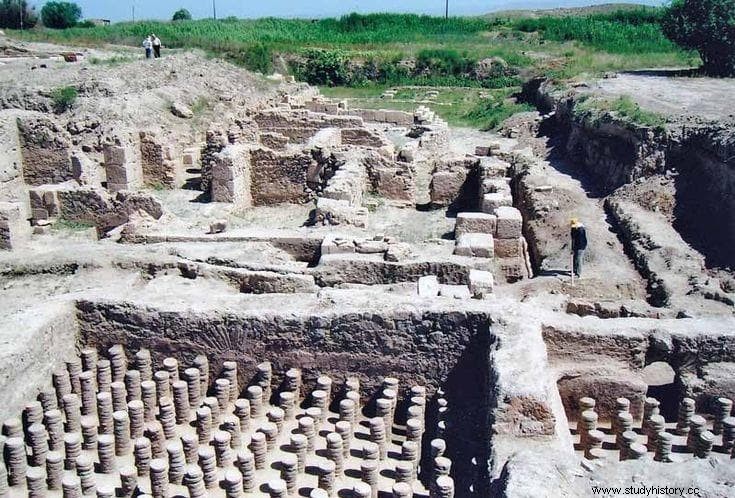According to the Greek historian Plutarch in his account of the life of Lucius Licinius Lucullus, the ancient city of Artaxata (located south of modern Artashat, in the Armenian province of Ararat) was built thanks to the advice of the Carthaginian general Hannibal, who also would have directed the works.

King Artaxias I was the founder of the Artaxid dynasty that ruled Armenia from 189 BC. until the Roman conquest in 12 BC. In 176 BC he founded the city of Artaxata to serve as his capital, which is why it was also known by the name of Vostan Hayots (court of the Armenians).
The historian Moses of Corene, writing in the 5th century AD. it says that Artashes traveled to the place of the confluence of the Yeraskh and the Metsamor and, as he liked the position of the hills adjacent to Mount Ararat, he chose it as the location of his new city, giving it his name .
That the city was a great center of Hellenistic culture is beyond doubt, both Plutarch and Strabo indicate that the city was large and lavishly adorned, calling it the Armenian Carthage . Hannibal's intervention in its construction is more controversial.

It is true that at that time the Carthaginian general was residing in Libissa, on the eastern shore of the Sea of Marmara, as a guest of the King of Bithynia. And also that he is credited with founding another city, Prusa (modern Bursa in Turkey). But the date of his death suggested by Titus Livy would have been about 7 years before the foundation of Artaxata, that is, 183 BC
Of course, it is significant that this is also the date of the death of his greatest enemy, Scipio Africanus, so it should not be ruled out that Livy made the dates of both deaths coincide on purpose.

From where Plutarch got the idea that Hannibal had something to do with the new Armenian capital is unknown to us. What we do know is that Artashes built a moated fortress on top of the city's acropolis, gradually turning Artaxata into a flourishing economic and political center filled with temples, baths, markets, workshops, and statues.
Shortly before the Romans arrived, during the reign of Artavasdes II between 55 and 34 BC. An amphitheater was built, the first in the entire region. At that time Artaxata had been abandoned as the capital in favor of Tigranocerta, closer to the new conquered territories. But in the year 60 B.C., before the Roman advance, he returned to exercise that function.

Its walls did not resist the legions of Gnaeus Domitius Corbulon the following year (59 BC), who conquered and razed it. Emperor Nero then took the opportunity to promote its reconstruction by granting King Tiridates I 50 million sesterces, as well as sending architects and engineers for that purpose. The only condition was that the city would be renamed Neronia .
The death of the emperor would mean the recovery of its original name, Artaxata, and the recovery of cultural and economic splendor, until the complete destruction in the year 369 AD. by the Sassanian empire under Shapur II.

The city was rediscovered by Soviet archaeologists in the 1920s, although archaeological excavations would not be carried out until the 1970s. The site is located about 8 kilometers south of modern Artashat (founded by the USSR government in 1945). .
